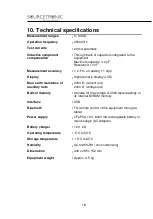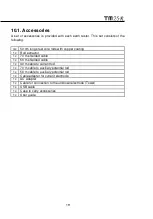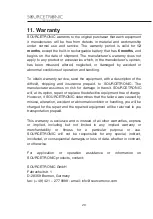
6
1. Description
Testing of the power transmission towers grounding (G) quality poses a
serious problem as they are all electrically interconnected by means of
Ground Wires which act as lightning rods, protecting the lines from
atmospheric discharges.
Due to the existence of this connection, any attempt to measure a tower
grounding (G) resistance using a conventional earth tester leads to wrong
results as what is really being measured is all the shunt towers grounding
(G) resistance (or, more precisely, its impedance at low frequency).
Trying to disconnect the ground wire from an energized line is a risky
operation due to the need for climbing to the tower highest part as well as
for the proximity to the high-voltage conductors.
To make this kind of test feasible, which is of vital importance to ensure
the transmission of the electrical power without interruptions,
SOURCETRONIC
TM-25R
grounding resistance tester for high frequency
has been developed. This is the appropriate tool for a fast, safe and
reliable grounding resistance measurement in each tower of a working
line transmission, without disconnecting the ground wire.
Its operation is based on the use of a high-frequency measurement
current (25 kHz), for which ground wire inductive impedance - taking into
account a typical length span is reasonably high, making it possible to
reduce the effect of the adjacent towers under measurement. The
equipment only measures the ground resistance of the surveyed tower,
including its base. The extensive G systems, such as meshes, buried
wires, metal pipes, etc, are measured only considering the closest section
to the connection point, so that the measured value represents the
performance, against a pulse signal similar to an atmospheric discharge.
Thus, values that better represent the system capacity to ground lightning
currents than the ones obtained with low frequency conventional
equipments, even when disconnecting the ground wire, are obtained.






































